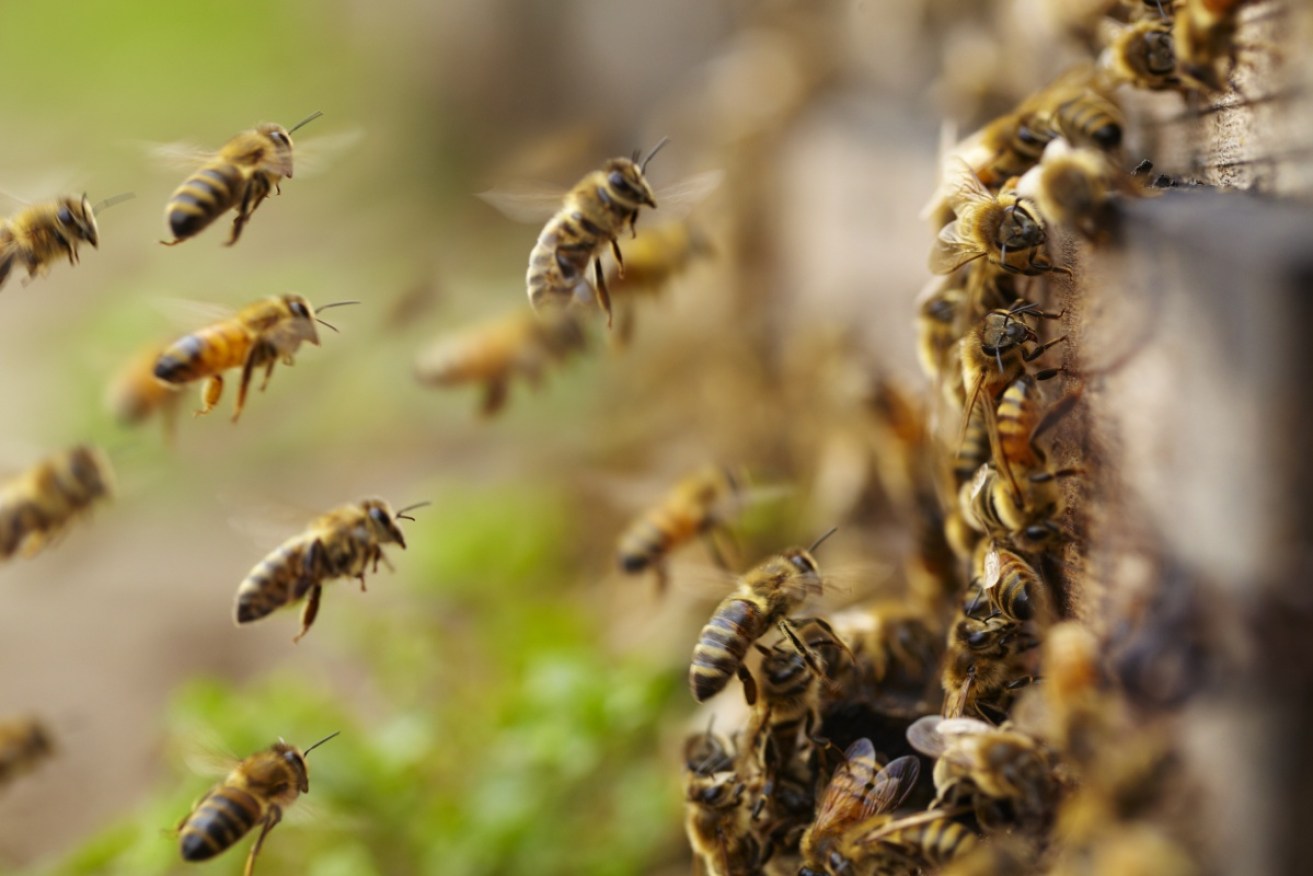Bees the biggest culprits when it comes to venomous bite and sting hospital admissions


Allergic reactions to bee stings resulted in the majority of venomous bites and stings hospital treatments in 2017-18. Photo: Getty
Australia is home to some of the world’s most venomous animals, but the humble bee is responsible for more than a quarter of all hospital admissions and, along with wasps, the majority of deaths due to venomous bites and stings, a report has revealed.
Venomous animals or plants landed more than 3500 Australians in hospital during 2017-18, the report by the Australian Institute of Health and Welfare (AIHW) showed.
Bee stings accounted for 26 per cent of these, totalling 927 cases.
“The majority of hospitalisations for bee stings were due to allergic reactions, with bees and wasps responsible for 12 of the 19 deaths related to venomous bites and stings in 2017-18,” AIHW’s National Injury Surveillance Unit spokesman and Flinders University professor Professor James Harrison said.

Bees and wasps were responsible for 12 of the 19 deaths related to venomous bites and stings. Photo: Getty
Spider bites were the next biggest culprits, accounting for one-fifth (19 per cent), or 666 cases, of hospital admissions.
Of those 666 cases, redback spiders were responsible for 42.5 per cent (283 cases) of hospital admissions, followed by white-tailed spiders (38 cases), and funnel web spiders (25 cases).
In just under half of all spider bite cases (45 per cent of 300), the type of spider responsible was unknown.
Venomous snakes are among the most-feared animals, with Australia home to 20 of the 25 most venomous snakes in the world.
However, snakes were responsible for just 17 per cent of all hospital admissions for a total of 606 cases.

Australia is home to 20 of the world’s top 25 most venomous snakes. Photo: Getty
Brown snakes accounted for 36 per cent (215 cases), followed by black snakes (83 cases) and tiger snakes (65 cases).
The type of snake responsible for the bite was unknown in 208 or 34 per cent of cases.
Of the 19 deaths due to venomous bites or stings recorded in 2017-18, seven were attributed to snakes.
Venomous animals can be found in the sea as well
Australia boasts some of the world’s most venomous animals on both land and in the sea.
Contact with venomous marine animals accounted for nearly 400 hospital admissions but no deaths in 2017-18, with stinging fish (including stonefish and stingrays) responsible for 320 hospital admissions, followed by jellyfish (73 cases).
“Alongside land-dwelling animals, Australia also has some of the world’s most venomous marine animals, including the Irukandji jellyfish,” Professor Harrison said.
The rate of hospital admissions for all venomous bites and stings varied by states and territories across Australia.
The highest rate occurred in the Northern Territory (31 cases per 100,000 population) and the lowest in the Australian Capital Territory (9 cases per 100,000).
“Residents of the very remote regions of Australia had the highest rate of hospitalisations (49 cases per 100,000), while the lowest rate was observed for residents of the major cities of Australia (9 cases per 100,000),” Professor Harrison said.








